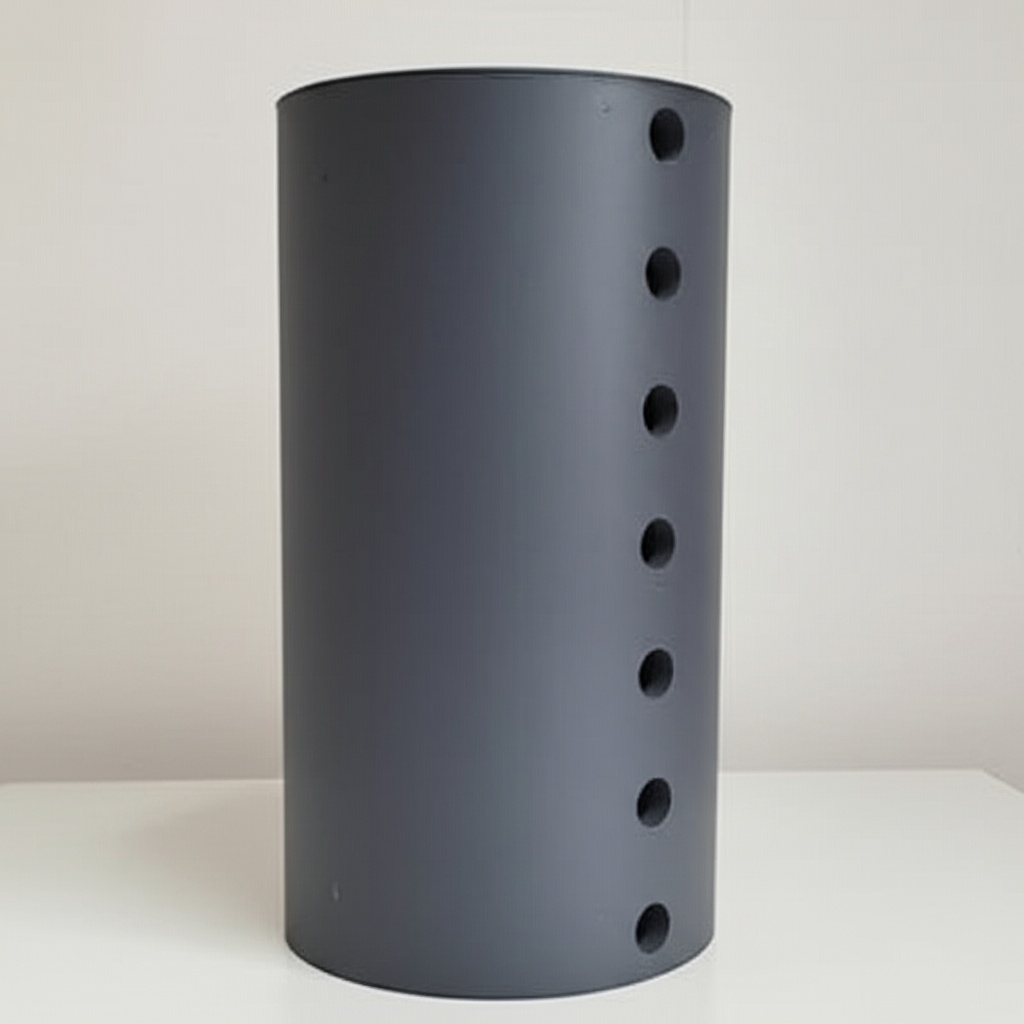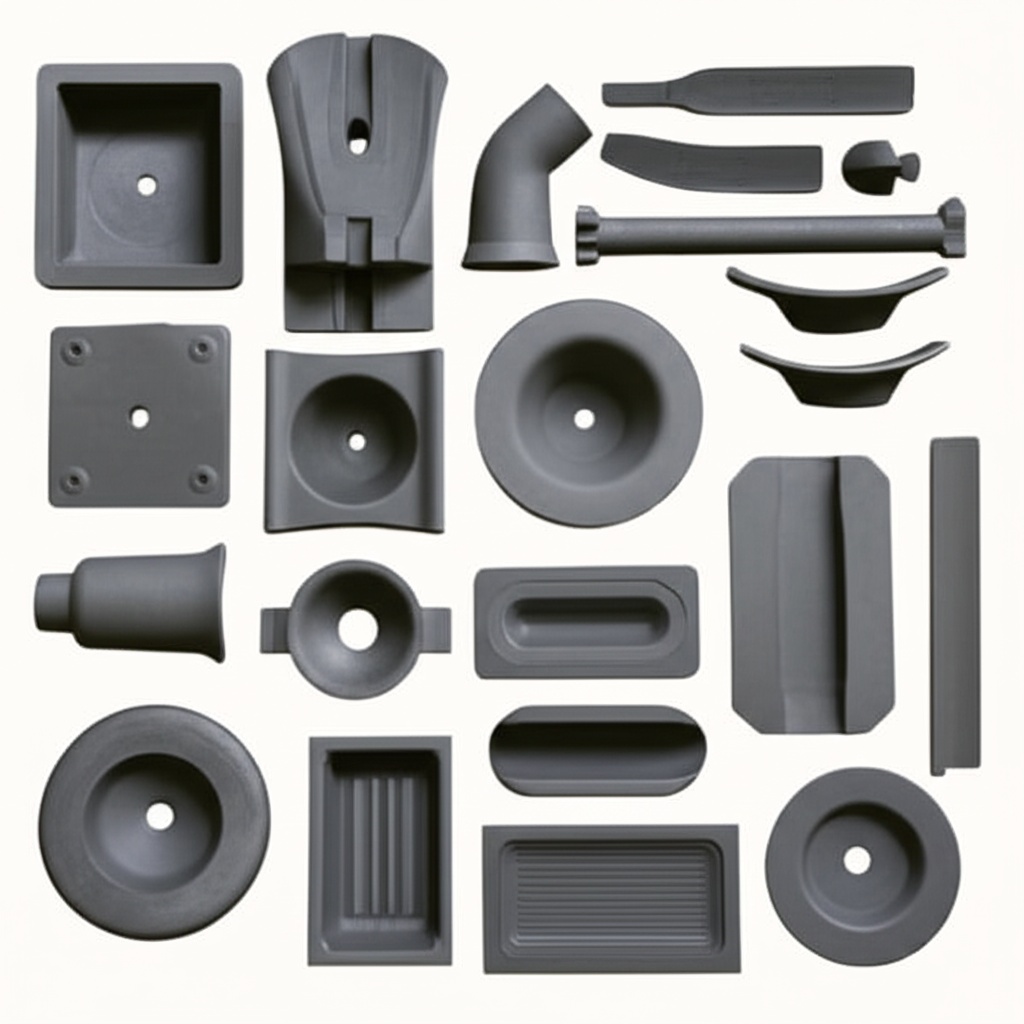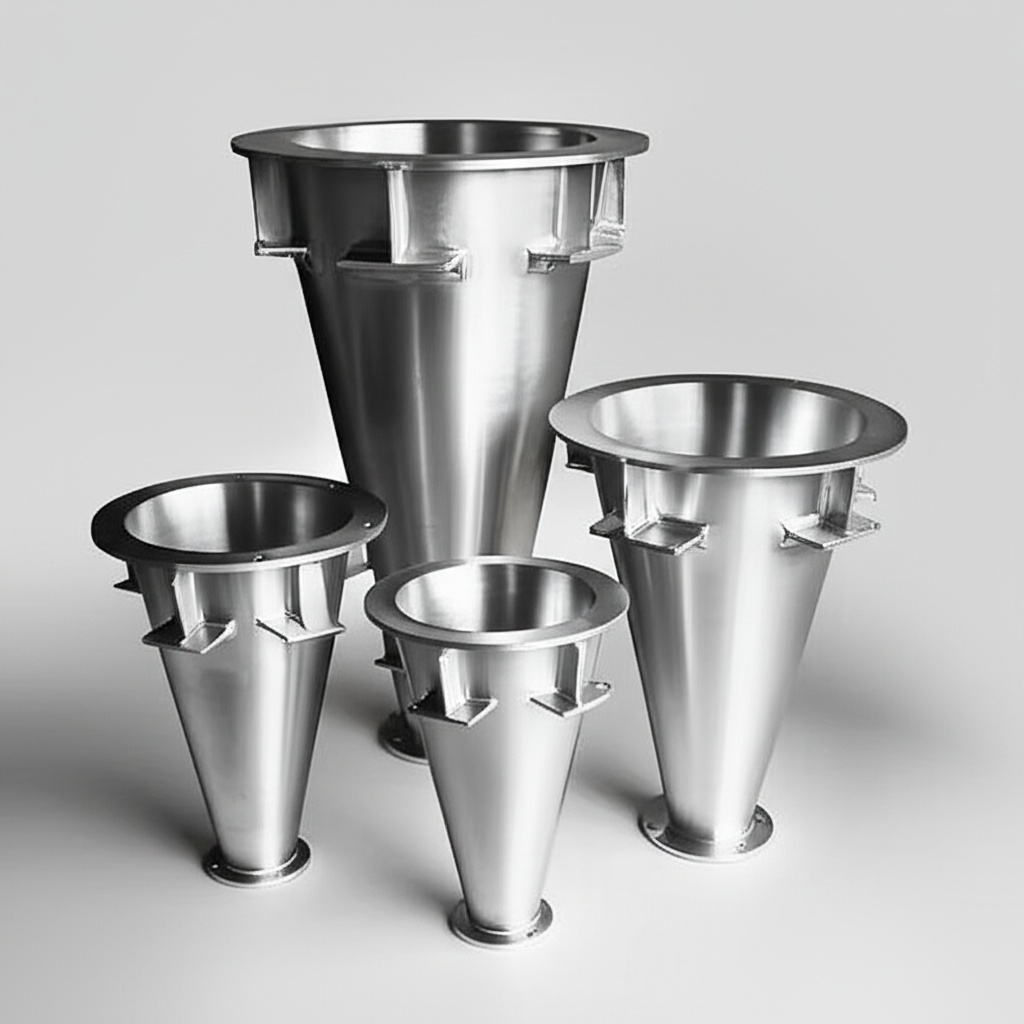Iran SiC Market: Sourcing Insights & Options

Share
Iran SiC Market: Sourcing Insights & Options
In the dynamic landscape of advanced materials, custom silicon carbide (SiC) stands out as a material of unparalleled performance, critical for pushing the boundaries in high-performance industrial applications. As industries globally seek superior solutions for extreme environments, the demand for specialized SiC products continues to surge. This blog post delves into the nuances of the Iran SiC market, offering invaluable insights for engineers, procurement managers, and technical buyers across a spectrum of vital sectors.
The Indispensable Role of Custom Silicon Carbide
Custom silicon carbide products are not merely components; they are engineered solutions designed to excel where other materials fail. Known for its exceptional hardness, high thermal conductivity, low thermal expansion, excellent wear and corrosion resistance, and remarkable chemical inertness, SiC is the material of choice for the most demanding applications. Whether it’s enhancing the efficiency of power electronics or ensuring the longevity of aerospace components, custom SiC delivers.
Main Applications Across Key Industries
The versatility of silicon carbide allows it to serve as a cornerstone material in an expansive array of industries. Its unique properties make it indispensable for critical components that operate under extreme conditions.
- Semiconductor Manufacturing: SiC wafers and components are vital for high-power, high-frequency, and high-temperature devices, enabling the next generation of semiconductors. Precision SiC parts are crucial for wafer processing equipment, ensuring purity and stability.
- Automotive: In electric vehicles (EVs) and hybrid vehicles, SiC power modules are revolutionizing inverters and onboard chargers, leading to increased efficiency, reduced size, and extended range.
- Aerospace & Defense: SiC components are employed in lightweight, high-strength structures, missile radomes, engine parts, and braking systems due to their thermal stability and wear resistance at elevated temperatures.
- Power Electronics: SiC devices are transforming power conversion systems, from renewable energy inverters to industrial motor drives, offering superior performance over traditional silicon-based alternatives.
- Renewable Energy: Essential for solar inverters and wind turbine converters, SiC enhances energy conversion efficiency and reliability.
- Metallurgy & High-Temperature Processing: SiC is used for furnace linings, crucibles, and kiln furniture, withstanding extreme temperatures and corrosive molten metals.
- Chemical Processing: Its chemical inertness makes SiC ideal for components in pumps, valves, and heat exchangers that handle aggressive chemicals.
- LED Manufacturing: SiC substrates are used for high-brightness LEDs, especially in UV and blue light applications, due to their excellent thermal management.
- Industrial Machinery: SiC bearings, seals, and nozzles offer extended lifespan and reduced maintenance in harsh industrial environments.
- Telecommunications: SiC is finding applications in high-frequency and high-power RF devices, supporting next-generation communication infrastructure.
- Oil & Gas: Wear and corrosion-resistant SiC components are used in drilling equipment and downhole tools.
- Medical Devices: Biocompatible SiC is being explored for prosthetics and medical implants due to its inertness and mechanical properties.
- Rail Transportation: SiC power modules are used in traction systems for trains, improving efficiency and reliability.
- Nuclear Energy: SiC composites are being developed for advanced nuclear reactor components due to their radiation resistance and high-temperature stability.
Why Custom Silicon Carbide? Advantages for Industrial Buyers
Opting for custom silicon carbide provides distinct advantages over off-the-shelf solutions, particularly for high-stakes industrial applications where precision and performance are paramount.
- Tailored Performance: Customization allows for specific material compositions and geometries, optimizing thermal resistance, wear resistance, chemical inertness, and electrical properties to meet unique application requirements.
- Optimized Design: Components can be designed to seamlessly integrate into existing systems, reducing assembly time and improving overall system efficiency.
- Enhanced Durability & Lifespan: Engineered to withstand specific operational stresses, custom SiC parts offer extended service life, reducing downtime and replacement costs.
- Problem-Solving Capability: Custom SiC is often the solution for overcoming limitations presented by traditional materials in extreme operating conditions.
- Cost-Effectiveness (Long-Term): While initial investment might be higher, the superior performance and longevity of custom SiC often lead to significant long-term cost savings through reduced maintenance and increased operational efficiency.
Recommended SiC Grades and Compositions for Diverse Needs
Understanding the various SiC grades is crucial for selecting the right material for your application. Each type offers a unique set of properties optimized for different performance criteria.
| SiC Grade/Type | Key Properties | Typical Applications |
|---|---|---|
| Reaction-Bonded SiC (RBSiC) | High strength, excellent wear resistance, good thermal shock resistance, fine grain structure. Often porous, can be infiltrated with silicon. | Kiln furniture, mechanical seals, pump parts, blast nozzles, automotive components. |
| Sintered SiC (SSiC) | Extremely hard, high strength, excellent corrosion resistance, high thermal conductivity, low porosity. Manufactured by sintering SiC powder at high temperatures. | Ball valve components, mechanical seals, semiconductor processing equipment, armor. |
| Nitride-Bonded SiC (NBSiC) | Good thermal shock resistance, high strength, good oxidation resistance. Nitrogen is used as a bonding agent. | Refractory applications, furnace components, kiln furniture. |
| Chemical Vapor Deposited (CVD) SiC | Highest purity, extremely dense, isotropic properties, excellent surface finish. Produced by chemical vapor deposition. | Semiconductor wafer boats, susceptors, optical components, mirror substrates. |
| Recrystallized SiC (ReSiC) | High thermal shock resistance, good load-bearing capacity at high temperatures. Formed by recrystallization of SiC grains without a binder. | High-temperature furnace elements, thermocouple protection tubes. |
Design Considerations for Custom SiC Products
Designing with silicon carbide requires a specialized approach due to its unique mechanical properties, particularly its hardness and brittleness. Careful design can significantly impact manufacturability, cost, and final product performance.
- Geometry Limits: Avoid sharp corners, deep grooves, and abrupt changes in cross-section to minimize stress concentrations. Radii should be maximized.
- Wall Thickness Uniformity: Strive for consistent wall thicknesses to ensure uniform cooling during manufacturing and prevent warping or cracking.
- Minimize Undercuts & Complex Features: These can significantly increase machining complexity and cost. Consider design for manufacturability (DFM) early in the process.
- Stress Points: Identify potential stress points during operation and design to distribute loads evenly. Finite Element Analysis (FEA) can be invaluable.
- Fastening Methods: Account for SiC’s brittleness when designing for mechanical fastening. Brazing or adhesive bonding might be preferred over traditional bolting in some cases.
Tolerance, Surface Finish & Dimensional Accuracy
Achieving precise tolerances and optimal surface finishes is critical for high-performance SiC components. The level of precision attainable depends on the SiC grade and the post-processing methods employed.
- Achievable Tolerances: Standard SiC machining can achieve tolerances in the range of $pm0.025 text{ mm}$ to $pm0.1 text{ mm}$. Finer tolerances, down to $pm0.005 text{ mm}$, are possible with advanced grinding and lapping techniques, albeit at a higher cost.
- Surface Finish Options: As-fired surfaces can be rough. Precision grinding, lapping, and polishing can achieve surface finishes ranging from Ra 0.8 $mutext{m}$ down to Ra 0.05 $mutext{m}$ or even lower for optical or sealing applications.
- Dimensional Accuracy: Consistent dimensional accuracy is maintained through stringent quality control throughout the manufacturing process, from raw material selection to final inspection.
Post-Processing Needs for Enhanced Performance
While SiC offers inherent advantages, specific post-processing steps can further enhance its performance, durability, and functionality for demanding applications.
- Grinding & Lapping: Essential for achieving precise dimensions and high surface finishes, particularly for mating surfaces or components requiring tight tolerances.
- Polishing: For applications requiring extremely smooth surfaces, such as semiconductor equipment or optical components, polishing is a crucial step.
- Sealing: For porous SiC grades like RBSiC, sealing processes (e.g., silicon infiltration) can improve impermeability and chemical resistance.
- Coating: Applying specific coatings can enhance properties like corrosion resistance, wear resistance, or even create electrically conductive or insulating layers depending on the application.
- Heat Treatment: While not typically for SiC itself, heat treatments may be applied to surrounding metallic components in assemblies to optimize performance.
Common Challenges and How to Overcome Them in SiC Manufacturing
Despite its superior properties, manufacturing custom silicon carbide products presents unique challenges that require specialized expertise and equipment.
- Brittleness: SiC’s inherent brittleness makes it susceptible to chipping and cracking during machining and handling. Overcoming this requires specialized diamond tooling, precise machining parameters, and careful post-machining handling.
- Machining Complexity: Its extreme hardness makes SiC very difficult to machine, requiring advanced techniques like diamond grinding, EDM (for conductive SiC), and laser machining, which contribute to higher manufacturing costs.
- Thermal Shock Sensitivity: While generally good, extreme and rapid temperature changes can still induce thermal shock in SiC. Careful design and material selection for specific thermal cycles are crucial.
- Cost: The high cost of raw materials and specialized manufacturing processes can be a barrier. However, the long-term benefits often outweigh the initial investment.
- Purity Control: For semiconductor and high-purity applications, maintaining material purity throughout the manufacturing process is critical to prevent contamination and ensure device performance.
How to Choose the Right Custom SiC Supplier
Selecting a reputable and capable custom silicon carbide supplier is paramount to the success of your project. A strategic partnership ensures quality, reliability, and technical support.
- Technical Capabilities & Expertise: Evaluate their experience in SiC manufacturing, material science, and engineering design. Do they have the necessary machinery and skilled personnel?
- Material Options: Ensure they offer the specific SiC grades and compositions suitable for your application (e.g., SSiC, RBSiC, CVD SiC).
- Quality Certifications: Look for certifications like ISO 9001, which demonstrate a commitment to quality management and consistent production standards.
- Customization Support: A strong supplier will offer design assistance, prototyping, and iterative development to meet your exact specifications. Explore their customizing support services.
- Supply Chain Reliability: Assess their ability to meet production volumes and deliver on time. This is especially crucial for high-volume or just-in-time manufacturing.
- Case Studies & References: Request examples of previous work and client testimonials to gauge their track record and reputation.
- Research & Development: A supplier actively engaged in R&D is likely to be at the forefront of material advancements and manufacturing techniques.
A Trusted Partner in Custom Silicon Carbide
When considering a reliable and high-quality source for custom silicon carbide products, look no further than Sicarb Tech. The company operates from Weifang City, China, which serves as the undeniable hub of China’s silicon carbide customizable parts manufacturing. This region is home to over 40 silicon carbide production enterprises, collectively accounting for more than 80% of the nation’s total SiC output.
Sicarb Tech has played a pivotal role in this growth, introducing and implementing silicon carbide production technology since 2015. They have actively assisted local enterprises in achieving large-scale production and significant technological advancements in product processes, truly witnessing the emergence and ongoing development of this vital industry.
Operating under the umbrella of Chinese Academy of Sciences (Weifang) Innovation Park, an entrepreneurial park closely collaborating with the National Technology Transfer Center of the Chinese Academy of Sciences, SicSino benefits from a robust scientific, technological, and talent pool. This national-level innovation and entrepreneurship service platform integrates innovation, entrepreneurship, technology transfer, venture capital, incubation, acceleration, and scientific and technological services, providing an unparalleled foundation for their operations.
Leveraging the extensive scientific and technological capabilities of the Chinese Academy of Sciences and backed by the Chinese Academy of Sciences National Technology Transfer Center, Sicarb Tech acts as a crucial bridge, facilitating the integration and collaboration of essential elements in the transfer and commercialization of scientific and technological achievements. They have established a comprehensive service ecosystem that spans the entire spectrum of the technology transfer and transformation process, ensuring more reliable quality and supply assurance within China.
The company boasts a domestic top-tier professional team specializing in customized production of silicon carbide products. Their profound impact is evident as over 413 local enterprises have benefited from their cutting-edge technologies. They possess a wide array of expertise, including material science, process development, design, measurement, and evaluation technologies, along with integrated processes from raw materials to finished products. This extensive capability enables them to meet diverse customization needs, offering higher-quality, cost-competitive customized silicon carbide components in China.
Beyond product supply, Sicarb Tech is uniquely positioned to assist companies looking to establish their own professional silicon carbide products manufacturing plants. They provide comprehensive technology transfer for professional silicon carbide production, along with a full range of turnkey project services. These include factory design, procurement of specialized equipment, installation and commissioning, and trial production. This ensures that their partners can own a professional silicon carbide products manufacturing plant with effective investment, reliable technology transformation, and a guaranteed input-output ratio.
Cost Drivers and Lead Time Considerations
Understanding the factors that influence the cost and lead time of custom SiC components is crucial for effective procurement and project planning.
- Material Grade & Purity: Higher purity grades (e.g., CVD SiC) and specialized compositions are typically more expensive due to their complex manufacturing processes and raw material costs.
- Component Complexity: Intricate geometries, tight tolerances, and features requiring extensive machining will significantly increase both cost and lead time. Simple, standardized shapes are generally more economical.
- Volume: Economies of scale apply. Higher production volumes often lead to lower per-unit costs, but may require longer lead times for initial setup and production runs.
- Surface Finish & Post-Processing: Requirements for extremely fine surface finishes (lapping, polishing) or specific coatings add to the manufacturing time and cost.
- Tooling & NRE (Non-Recurring Engineering) Costs: For highly customized parts, there may be upfront costs associated with design, prototyping, and specialized tooling.
- Supplier Workload & Capacity: The supplier’s current production schedule and capacity can influence lead times. Engaging early in the design phase can help secure favorable lead times.
- Shipping & Logistics: For international sourcing, shipping methods and customs clearance can impact both cost and delivery schedules. For inquiries and a tailored quote, feel free to contact us.
Frequently Asked Questions (FAQ)
Q: What is the typical lifespan of a custom silicon carbide component?
A: The lifespan of a custom SiC component is highly dependent on the specific application, operating conditions (temperature, chemical exposure, abrasive environment), and the chosen SiC grade. However, due to its exceptional hardness, wear, and corrosion resistance, SiC components generally offer significantly longer lifespans compared to traditional engineering materials, often lasting many years even in harsh environments.
Q: Can silicon carbide be repaired if damaged?
A: Due to its inherent hardness and brittleness, repairing silicon carbide components can be challenging and is often not feasible for structural integrity. Small chips or surface imperfections might be addressed through localized grinding or polishing, but significant damage typically necessitates replacement of the component to ensure performance and safety.
Q: What is the lead time for custom SiC parts?
A: Lead times for custom SiC parts vary widely depending on the complexity of the design, the specific SiC grade, the required volume, and the supplier’s current production queue. Prototype orders might range from 4-8 weeks, while larger production runs could take 10-20 weeks or more. It is always best to discuss your specific project needs with your chosen supplier for an accurate estimate.
Q: Is SiC electrically conductive or insulating?
A: Silicon carbide can be engineered to be either electrically conductive or insulating. High-purity SiC is an excellent electrical insulator and has a high dielectric strength. However, by introducing specific dopants during manufacturing, SiC can be made semi-conductive (as used in power electronics) or even highly conductive for applications like heating elements or electrodes.
Conclusion
Custom silicon carbide products represent the pinnacle of advanced material engineering, offering unparalleled performance in the most demanding industrial environments. From the relentless requirements of semiconductor manufacturing to the extreme conditions of aerospace and power electronics, SiC provides solutions that enhance efficiency, extend lifespan, and drive innovation. By understanding the various SiC grades, design considerations, and the critical role of a capable supplier, industries can leverage the full potential of this remarkable material. Partnering with experienced manufacturers like Sicarb Tech ensures access to cutting-edge technology, superior quality, and tailored solutions, paving the way for the next generation of high-performance industrial components.

About the Author: Sicarb Tech
We provide clear and reliable insights into silicon carbide materials, component manufacturing, application technologies, and global market trends. Our content reflects industry expertise, practical experience, and a commitment to helping readers understand the evolving SiC landscape.




